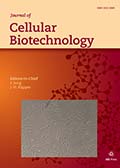Authors: Anarthe, Raju | Mani, Amit | Saklecha, Sejal
Article Type:
Research Article
Abstract:
An important indicator of general health, well-being, and quality of life is oral health. The SARS-CoV-2 virus, which has been discovered to have a number of adverse effects. One of the earliest tissue areas to become infected by the virus and undergo alterations is the oral cavity. Oral manifestations included ulcer, erosion, bulla, vesicle, pustule, fissured or depapillated tongue, macule, papule, plaque, pigmentation, halitosis, white patches, haemorrhagic crust, necrosis, petechiae, swelling, erythema, and spontaneous bleeding. The tongue (38%), labial mucosa (26%), and palate (22%) were the three most typical sites of involvement. Aphthous stomatitis, herpetiform lesions, candidiasis, vasculitis, mucositis, drug
…eruption, necrotizing periodontal disease, angina bullosa-like, angular cheilitis, atypical sweet syndrome, and Melkerson-Rosenthal syndrome were suggested diagnoses for the lesions. In 68% of instances, oral lesions were symptomatic. There were almost equally as many oral lesions in both sexes (49% female and 51% male). More extensive and severe oral lesions were present in patients who were older and who had COVID-19 diseases that were more severe. The most significant risk factors for the development of oral lesions in COVID-19 patients include poor oral hygiene, opportunistic infections, stress, immunosuppression, vasculitis, and hyper-inflammatory response. It is crucial to identify any changes in the mucosa in COVID-19 patients and administer assertive treatment to prevent complications. Patients should also try to maintain adequate oral hygiene throughout the course of the illness to prevent the colonisation of opportunistic microorganisms and to prevent complications both orally and systemically.
Show more
Keywords: COVID-19, oral manifestations, petechiae, apthous ulcers, herpetiform lesions
DOI: 10.3233/JCB-220085
Citation: Journal of Cellular Biotechnology,
vol. 9, no. 1, pp. 39-49, 2023




